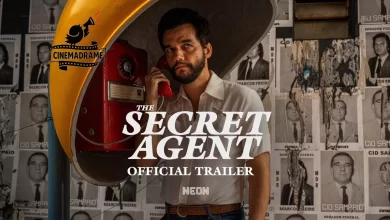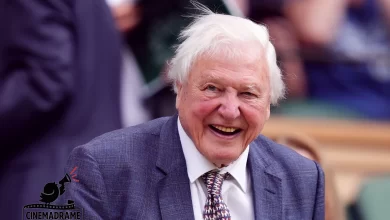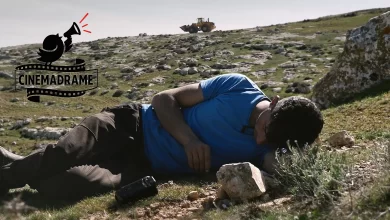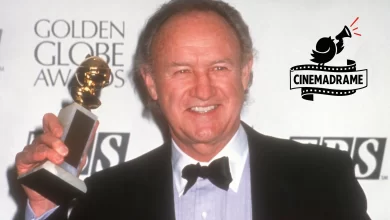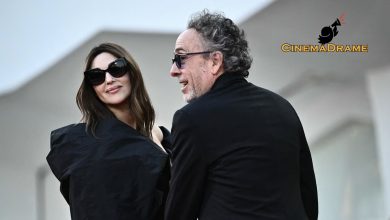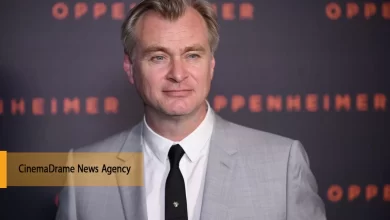Review by film critic Sahebe Pooyan Mehr on Saeed Roustayi’s film Women and Child/ A social drama with messages about women’s issues and suffocating mise-en-scènes


According to CinemaDrame News Agency, film critic Sahebe Pooyan Mehr, in an exclusive note, reviewed Saeed Roustayi’s latest film Women and Children and wrote: Women and Children is Roustayi’s newest work, once again delving into social drama and targeting women’s society to deliver its messages. In this film, Roustayi portrays women who are each, in their own way, struggling with themselves to survive. To be honest, I am always surprised by his choices in creating the worlds of his films, because he selects ideas that we witness every day yet so few truly reflect upon. In fact, one must say he is a filmmaker with concerns, for whom the artistic value of a work is important.
At first, understanding what the film seeks to say may be difficult for the audience, as the first third unfolds calmly and serves solely to introduce the characters. But one can argue that the central storyline revolves around a mother who is struggling to come to terms with her grief and failures, in the face of a family that not only fails to understand her but also unintentionally inflicts deep wounds upon her. At its core, the story portrays a society in which women fall victim to men’s lusts and cannot accept their own weaknesses.
The screenplay follows a three-act structure lasting about 138 minutes. It has many strengths, though weaknesses can also be noted, which I will address below.
The opening sequence is a solid choice to introduce the target society: a beauty clinic filled with women striving to improve their appearance in order to be accepted. On the other hand, it is one of the moments that, after the first plot point, successfully delivers a bold shock to the audience, encouraging them to continue watching.
The protagonist is Mahnaz (played by Parinaz Izadyar). She is constantly entangled in various issues and strives to resolve them, eventually achieving spiritual growth as expected of her. She is strong and capable of taking the audience along with her.
The antagonist is Hamid, who, with all his power, makes the protagonist’s journey more difficult and complicated according to the character traits defined for him. In the end, he undergoes no character change and remains an anti-value figure, strong enough to add to the film’s dramatic tension.
The deceased husband’s sister also begins as an anti-value but transforms into a value when she reveals the truth.
The first plot point occurs when Hamid, at Mahnaz’s engagement ceremony, becomes infatuated with her younger sister. This is precisely when the main challenge emerges and the central conflict begins.
The main climax arrives in court, when the school principal softens toward Mahnaz and refuses to testify against her. This is when the truth comes to light for everyone.
The second turning point occurs when the protagonist takes her revenge: she disconnects her father-in-law’s oxygen machine and watches him die, attaining what she longed for in her heart—as though avenging Aliyar—and ultimately ends up embracing the child of the very sister who betrayed her.
I greatly admired the ending: Hamid stands on the terrace of his mother-in-law’s house while Mahnaz, visible in a room overlooking the terrace, smokes a cigarette. As she stares at Hamid through the glass, Aliyar’s framed photograph is also reflected in it. This is precisely the moment of the hero’s journey: the director declares that Hamid, like Aliyar, is now considered dead to the protagonist. This realization makes her rise, take the baby in her arms, and finally break down in tears.
The screenplay of Women and Children is meticulous in its planting before major events occur. No character appears without a proper introduction before the first plot point, and no event happens without earlier foreshadowing. For instance, in an early scene the grandmother orders pizza and remarks that Aliyar dislikes pasta—an exchange that leads to a bitter argument with the grandfather (played by Hassan Pourshirazi) and eventually a tragic event. Such instances recur throughout the film.
Dialogue writing is another strength. Lines are concise and well-crafted, without unnecessary exposition, usually expressing the intended meaning with the fewest words.
One weakness, however, is a time jump that diluted expected traits in Mahnaz and Hamid’s characters. Without the cast’s strong performances, the film might have seemed disjointed. The aim was to show a mother not only heartbroken but also grieving her child, doing everything she can to blame others for the death and free herself from the guilt of responsibility. Yet the passage of time, conveyed only through dialogue, disrupted the film’s continuity and weakened the emotional impact. Similarly, to depict Hamid’s moral corruption, more scenes like the incident at the engagement could have been used, rather than relying on scattered dialogue references.
Despite these flaws, character design is not weak—it only needed revisions and adjustments. Still, we empathize with the grieving mother, we come to know Hamid, and we see the passive and fearful natures of Farahnaz and her mother. Notably, the characters of Aliyar, Neda, and the grandparents are among the most perfectly designed in the work.
The performances are not merely good; they are stunning. No shortcomings can be found—each actor is convincing and authentic, fully embodying their roles. Parinaz Izadyar delivers one of her best performances, especially in the scenes of Aliyar’s death and its aftermath. Peyman Maadi is perfectly convincing as a lustful man willing to trample every moral code to possess a woman who catches his eye. Hassan Pourshirazi is unforgettable, so deeply immersed in his role that he lingers in memory. Mansour Nasiri, though in a smaller role, shows his mastery by skillfully using body and facial expressions rather than stiff delivery. Sinan Mohibi leaves a lasting impression as a restless teenage boy, perhaps suffering from early maturity, bursting with uncontrollable energy. Arshida Dorostkar is equally remarkable, beautifully understanding and portraying her role as a girl who focuses entirely on her mother and may be the only one to truly understand Mahnaz.
The makeup team has done excellent work, adding depth to the drama. The best example is Mahnaz’s face: a pale woman with dark circles and dry lips, whose appearance alone conveys her inner turmoil without need for dialogue. Makeup has succeeded in completing the film’s visual atmosphere and intensifying the psychological impact of the characters.
Costume design is also appropriate for context and situation. Sheyda Mahmoudzadeh has played a key role in realistically recreating Iranian women’s dress and hijab. Mahnaz is constantly seen in simple clothing fitting her social class and circumstances. This applies to all characters—for instance, Hamid’s EMS uniform reveals his profession. Costume design thus reflects identity. Color psychology is used effectively: recall the scene of Aliyar gambling at school, wearing a black sweatshirt, symbolizing his inner sense of power and superiority. Or the engagement scene, where Farahnaz wears a white blouse, symbolizing the innocence of a young girl about to become prey. Overall, costume design is highly successful.
Production design in Women and Children uses a powerful visual language to depict women trapped by domestic, familial, and social pressures. The interior setting of the house conveys anxiety and helplessness. Purposeful lighting enhances this: neutral colors and simple textures create a backdrop for playing with light. Cold tones—gray, blue, off-white—combined with fluorescent or filtered natural light, evoke the lifelessness and coldness of human relationships. This continues until the scene where Mahnaz embraces the baby. Until then, only cold lighting is used, but in that moment, a warm yellow glow enters through the window, symbolizing renewed hope in the heroine’s heart. This was one of the film’s most brilliant visual choices, delivering a fully cinematic moment.
Editing is somewhat debatable. Some extraneous scenes could have been cut, and the rhythm is slow in the first third before picking up once the conflict begins. However, the montage of related shots and the smooth blending of images is well executed. Despite the time jump in the script, editing succeeds in maintaining overall coherence, which demonstrates the professionalism of the editing team.
Saeed Roustayi, an intelligent and tasteful Iranian director, has once again delivered a strong work. With dark and confined visual spaces, tight framing, cold lighting, and suffocating mise-en-scènes, he has crafted a world that remains memorable. Roustayi is among the rare few who truly understand cinema and boldly use visual language to expose weaknesses.

